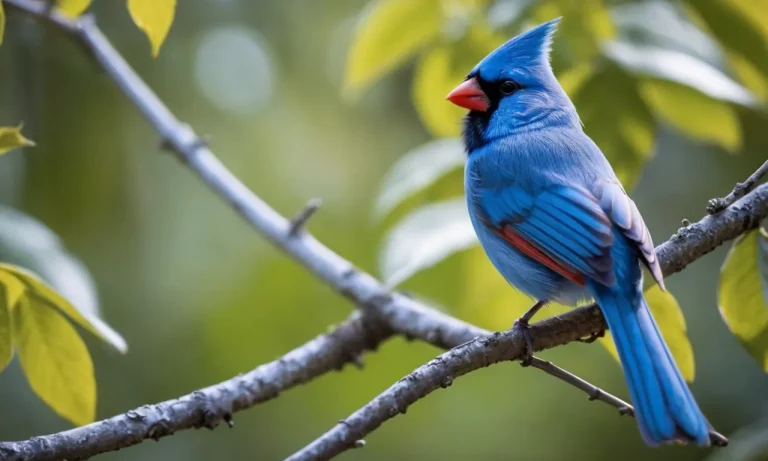The miniature trees of bonsai carry profound spiritual meaning and symbolism. If you’re short on time, here’s a quick answer: bonsai trees represent harmony, peace, order of thoughts, the beauty and perfection of nature, and spiritual awakening.
In this comprehensive guide, we will uncover the origins of bonsai, how it made its way from China and Japan to the West, and the deeper symbolic and spiritual meanings around growing bonsai trees.
History and Origins of Bonsai
Bonsai Origins in China and Japan
The practice of growing miniature trees in containers originated in ancient China over a thousand years ago during the Tang Dynasty. Chinese monks would collect wild trees and cultivate them in small pots to decorate their temple courtyards. This early form of bonsai was known as “penjing.”
Over the centuries, knowledge and techniques of growing bonsai spread from China to Japan. The Japanese further refined bonsai into an art form with established aesthetic principles. They coined the term “bonsai” meaning “planted in a container.”
While the Chinese approached bonsai primarily from a technical perspective, the Japanese infused bonsai with philosophical and spiritual underpinnings.
Arrival of Bonsai to Europe and America
It was not until the late 19th century that bonsai was introduced to the Western world. As Japan opened trade with Europe and America, visitors to Japan brought back potted bonsai trees as souvenirs. This sparked some interest in bonsai in the West.
But it was not until after World War II that bonsai really took off in Europe and America. Many members of the occupying forces in Japan after the war developed an appreciation for bonsai and brought trees and knowledge of the craft back home with them.
This led to a surge of enthusiasm for bonsai in Europe and America in the 1950s and 60s.
Today, bonsai is practiced by hobbyists around the world. While Japan remains the authoritative source on techniques and aesthetics, bonsai continues to evolve in Europe and America. New indigenous species are used for bonsai, and the craft integrates some regional styles.
But ultimately, the spiritual essence and symbology that originated in China and Japan still lies at the heart of bonsai today.
Symbolic Meanings of Bonsai
Representation of Harmony and Order
Bonsai trees represent harmony and order in nature according to the philosophies of Taoism and Zen Buddhism. The care and technique required to tend a bonsai tree teaches one patience and mindfulness. The aesthetic pruning and wiring of branches into an orderly composition creates a miniaturized tree that mimics the perfect essential form that exists in nature.
Mindfulness and Mental Clarity
The practice of cultivating bonsai trees has been associated with promoting mindfulness and mental clarity in people. The care and maintenance of bonsai involves precise techniques like pruning, wiring and watering which requires discipline and attentiveness from the grower.
This encourages living in the present moment. Achieving a visual balance and form in shaping the bonsai also requires visualization skills. Such immersive practices help clear one’s mind of stress and wanderings thoughts.
Expression of Beauty and Perfection
Bonsai are considered the personification of natural beauty and perfection by the Japanese. Despite being constrained in pots, bonsai showcase the pristine shapes and designs that manifest in wild trees and forests.
They represent the potential and resilience existing in trees to adapt and evolve into majestic living artworks when skillfully guided by patient and caring hands. The elegance of form and visual harmony achieved in shaped bonsai specimens reflects the Japanese appreciation of balance and symmetry as the pinnacle of aesthetic ideals.
Spiritual Practice and Awakening
The act of practicing the art of bonsai has been associated with inducing meditative and transcendental states that are linked to spiritual awakening. The care and shaping given to a bonsai tree is analogous to nurturing one’s own soul and destiny.
Moreover, the cycles of seasonal change reflected in the growth and flowering of bonsai trees represents the Buddhist ideas of impermanence and renewal. Trees that survive for centuries serve as living examples of endurance and timelessness.
Contemplating such monumental scales of time through bonsai cultivation allows one to reflect on the meaning of human existence. This leads to greater intuition and understanding of one’s inner spirit.
Bonsai Tree Care and Cultivation
Choosing Plants for Bonsai
When selecting plants for bonsai, it’s important to consider their resilience, growth pattern, leaf size, and other factors that determine how well they will thrive in miniature form. Conifers like pines, spruces, and junipers make excellent bonsai subjects as their foliage reduces well.
Deciduous trees like maples, elms, and oaks also reduce nicely for bonsai. Tropical trees like banyan, buttonwood, and ficus have leaves that shrink as the plants grow, making them great bonsai candidates. The morphology of the plant should suit the desired bonsai style too.
It’s best to source young bonsai plants from reputable nurseries. Look for healthy specimens with undamaged bark and no signs of pests or disease. The plant should have a good trunk base to work from or have branches positioned where future shaping will be easy.
Patience is key, as shaping a bonsai takes months or years depending on the growth rate of the species. Favor slow-growing trees like pines and junipers for beginning bonsai enthusiasts.
Shaping Techniques
The main bonsai shaping techniques involve training the trunk and branches using wiring, pruning, clamping, and grafting over an extended time. Bonsai shaping aims to create a miniaturized but realistic representation of a full-sized tree in nature.
- Wiring – Young branches are wrapped with aluminum or copper wires and gently bent into desired positions. The wiring shapes the branch while staying on until the branch sets.
- Pruning – Strategic cutting back of branches and roots controls growth and achieves the required shape.
- Clamping – Clamps apply pressure to a branch to reshape it in the same way wiring does.
- Grafting – Adding branches from suitable donor plants expands shaping options.
A careful eye and plenty of care is needed when carrying out any invasive shaping to protect the tree’s health. Remove wires before they start biting into branches. Study bonsai shaping under a master before attempting techniques on treasured trees.
Soil, Watering and Feeding
Bonsai soil mixes are specially formulated to meet miniature trees’ drainage and nutrition needs. A good soil contains substances like coarse sand, volcanic pumice, fired clay, and peat to ensure adequate aeration and moisture retention. Never use regular potting soil, as it retains too much water leading to root rot.
How often bonsai trees need watering depends on species, soil mix, climate, time of year, and size of pot. Assess soil moisture daily by checking if the top inch is dry; water thoroughly until it drips from the holes when required.
Bonsai usually need feeding every 2 weeks during growth with liquid fertilizer mixed as per label instructions.
| Bonsai Tree | Water Needs | Feeding Regime |
|---|---|---|
| Conifers like pines | Prefer drier soil | Fortnightly all year |
| Deciduous broadleaf | Keep soil moist | Fortnightly during growth |
| Tropical and subtropical | High moisture needs | Weak feed fortnightly |
Following suitable watering, soil, and feeding practices fulfills miniature trees’ nutritional needs for consistent, healthy, and aesthetic growth.
Conclusion
In conclusion, bonsai trees hold deep symbolic meaning representing harmony, order, beauty and spiritual awakening. The mindful cultivation of bonsai helps attain mental clarity and can be a spiritual practice itself.
With proper care around plant choice, shaping techniques and feeding, anyone can harness the peaceful energy of bonsai trees. This unique artform will continue spreading its symbolic message around the world.






